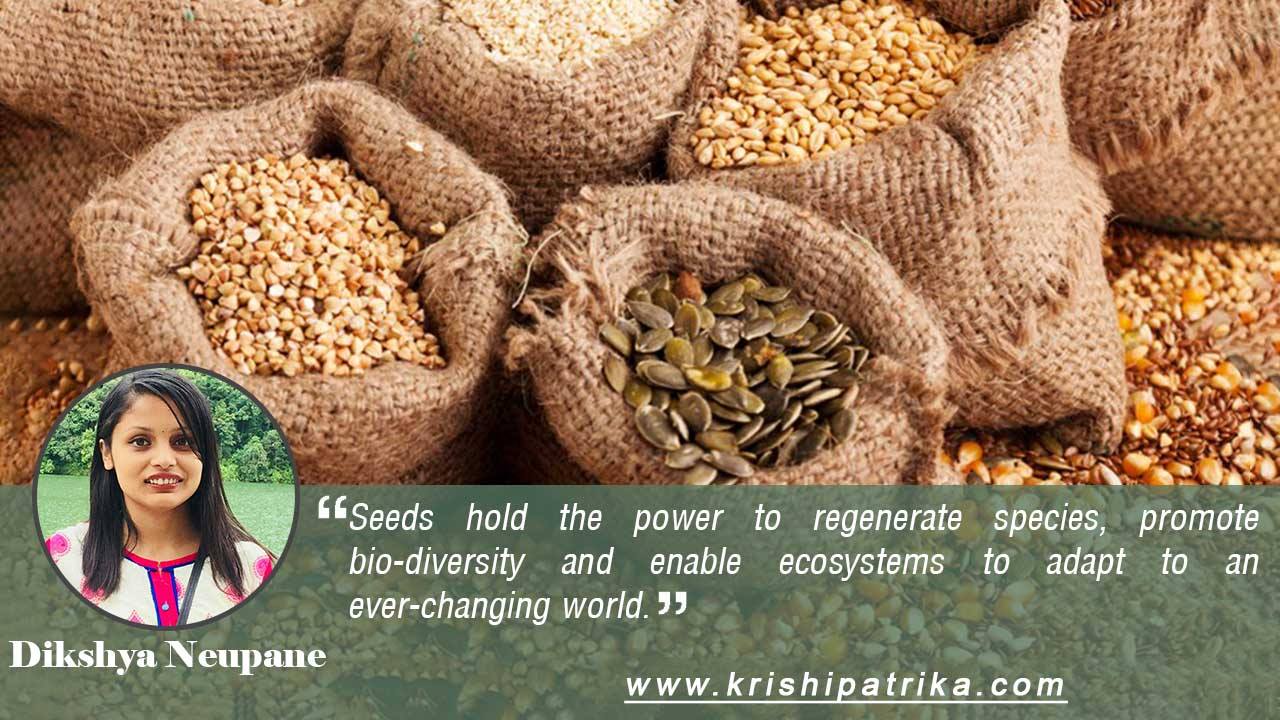
Seed is a fertilised mature ovule that posses an embryonic plant,stored food material(endosperm) and a protective coat(testa), which is viable and has capacity to germinate. We are very known of the fact that many seeds are edible and the majority of human calories comes from seeds, especially from cereals, legumes and nuts. Seeds also provide most cooking oils,spices and many beverages and some important food additives. The storage proteins of the embryo and endosperm differ in their amino acid content and physical properties. For example, the gluten of wheat, important in providing the elastic property to bread dough is strictly an endosperm protein.
The technique for home organic gardening is storing seeds from other plants rather than going to the market and purchasing processed seeds which have different kinds of chemicals in them. Planting seeds can be a great hobby and a time pass, especially when one is free, this is a joyous activity. Nothing is better than planting vegetable, herbs and fruits in your own garden and then watching them grow in the period of time and then cultivating or plucking them. One will not only enjoy having the delicious herbs, vegetables and fruits grown in their home, but they are also very healthy since no harmful chemical and fertilizer is added to them. In today’s world if we see, many doctors may not recommended having an apple with its skin, why? That is because of the harmful chemicals and fertilizers added to the apple tree and spraying on them, which is causing different types of diseases. By growing them at home, they will be safe in it and will also taste better.
The preservation of seed is of utmost importance in today’s world. Seeds hold the power to regenerate species, promote biodiversity and enable ecosystems to adapt to an ever-changing world. These are primary reasons why it’s necessary to preserve the seed, and it is this need through which the concept of ‘seed bank’ emerged.
Seeds are preserved and stored since ancient times. In ancient time , people used to preserved seeds :
1.By soaking in salt water solution(1:10) and dried in the sun
2.They kept the seeds in a pit filled with saw dust and sand.
3.Some seeds were kept along with horse gram.
4.Some were stored in a layer of ash and kept in earthern pot and covered with cow dung to make it air tight.
But with the time passes people are practising the new methods of seed preservation for the
maintenance of quality. Here are some of the methods that should be considered for preserving the seed.
- Clean the Seeds Promptly After Removing them from the Plants :
It is essential that as soon as you take seeds from your plants that the first thing you do is thoroughly clean them.This helps to remove all soil, dirt, and dust residue.It can be done with a recyclable facial tissue or soft hand towel. Depending upon the species, you may also need to remove additional matter such as natural coatings, shells, husks, and cobs.
- Dry the Seeds Before Storing :
Once clean, the seeds need to be dried. Separate seeds by type accordingly, and spread them out evenly on a dry paper towel or clean dye-free parchment. Resist the urge to use newspaper – the ink can seep through onto the moist seeds. If the sun is shining feel free to let them dry quickly in their naturally lit environment.
- Freezing Seeds for Long Term Storage :
Inspect your seeds to ensure that they have completely dried. When that is confirmed you are ready to place them into a container for safe storage. If storing seeds for the long term (approximately up to 3 years) you will need to freeze them. When freezing, place the same-kind seeds into a ziplock bag and seal them tightly. Because you need to reduce the rate of aerobic respiration you must exclude all oxygen from the the container.
- Open Area Storing of Seeds for Shorter Term :
If you are looking at shorter term seed preservation you may be considering open area storage. You will still need to sustain the seeds in an airtight container to keep the oxygen at bay. Temperatures should remain cool and constant as well. At the same time, you will need to prevent moisture from entering the container. This can be accomplished with an old household trick involving powdered milk. Place two heaping tablespoons of powdered milk onto layers of tissue (three or four will be fine, depending upon the ply count), wrap the tissue firmly around the powder (you don’t want any of the powder to touch the seeds), and place it within each jar/container where your seeds are being preserved. Once again, label each container by type and date.
- Monitor the Seed Storage Environment Once Per Month :
While you have packed away your organic seeds for storage with an expert hand it is a good idea to return and check the environment once a month. Make sure that ziplock bags have not torn during movement within shared freezer space and that sealed containers have not cracked. We must be careful to see that temperatures remain constant and that no obstructions have been added to the storage area that can alter light (and thus temperature).
- Careful Transition from Storage to Planting :
When the time comes for you to remove your seeds from storage be sure to keep them sealed until the container/ziplock has returned to room temperature. Remember, seeds should not leave storage until you are truly ready to return them to the soil, so plan your planting schedule accordingly.
The above seed preservation tips will serve our personal or community organic gardening needs. However when it comes to seed preservation on a larger scale much more care is involved, delving into agricultural sciences and tailoring preservation methods by plant species.









